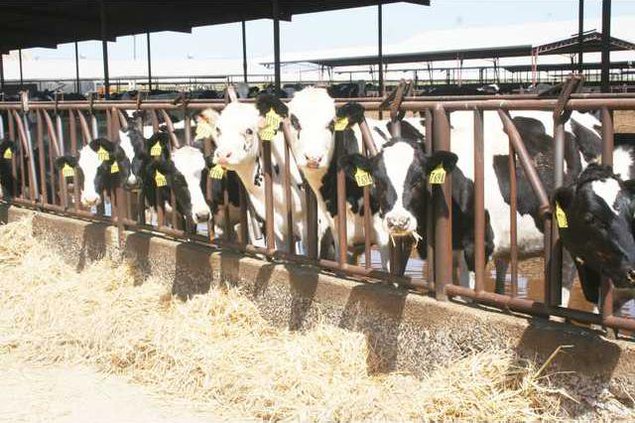Just like the cow in the beloved nursery rhyme, local dairy producers are over the moon following the U.S. Department of Agriculture’s recommended decision last week to establish a California Federal Milk Marketing Order— a move that could potentially lead to more equitable milk pricing to prices paid to California milk processors.
“We are heartened that USDA’s Recommended Decision reflects the FMMO we proposed,” said Rachel Kaldor, Executive Director of the Dairy Institute of California. “If California dairy farmers approve a FMMO based upon the Recommended Decision, the same basic milk pricing and revenue pooling structure in place in the other FMMOs would apply to California farmers and processors as well.”
Two years ago, California Dairies Inc., Dairy Farmers of America, and Land O’Lakes — three California dairy cooperatives that represent over 75 percent of the milk produced in the state — submitted a public hearing proposal to the USDA for the establishment of a California FMMO.
In August 2015, the USDA announced its decision to hold a public hearing on a proposed California FMMO one month later. This move was instantaneously praised by a number of dairy producers throughout the state, including the California Dairy Campaign, which is a statewide membership association of family dairy farmers, and the Dairy Institute of California, a non-profit trade association that represents dairy producers on legislative and regulatory matters at the state and federal level.
The marketing area of the recommended FMMO, which published in the Federal Register on Tuesday, would incorporate the entire state of California and compel California milk processors to be fully regulated. This recommended decision is based on a two-month long public hearing that included over a month of extensive witness testimony and nearly 200 exhibits.
As detailed by the USDA, FMMOs are legal instruments that regulate the purchase of milk between dairy farmers and first buyer. Where appropriate, the recommended California FMMO proposes adoption of uniform order provisions contained in the 10 current FMMOS. These uniform provisions include, but are not limited to, dairy product classification, end-product price formulas and the producer-handler definition. The proposed order would recognize the unique market structure of the California dairy industry through tailored performance-based standards to determine eligibility for pool participation. The proposed order provides for the recognition of producer quota as administered by the California Department of Food and Agriculture.
The California Dairy Campaign echoed the Dairy Institute of California’s approval of the USDA’s decision to establish a California FMMO.
“Since California Dairy Campaign was established it has called for California to join the federal milk marketing order system to bring California dairy producer prices and the process for determining prices in line with the rest of the federal order system,” the CDC website stated. “CDC welcomed the announcement of the USDA decision and will be fully engaged in the public comment process to ensure the USDA Final Decision on a California Federal Milk Marketing Order is equitable for California dairy producers.”
California represents over 20 percent of all nationwide milk production and is currently regulated by a state milk marketing order administered by California Department of Food and Agriculture. Comments on the recommended decision will be accepted for 90 days after official publication in the Federal Register. After analyzing and considering public comments, USDA will issue a final decision.
USDA is scheduled to host a public meeting from 9 a.m. to noon Wednesday in Clovis to answer questions relating to how the proposed California FMMO would operate and how the proposed California FMMO would operate and how the public can submit comments for USDA consideration. The meeting will also be available via a live webcast at ams.usda.gov/caorder.






